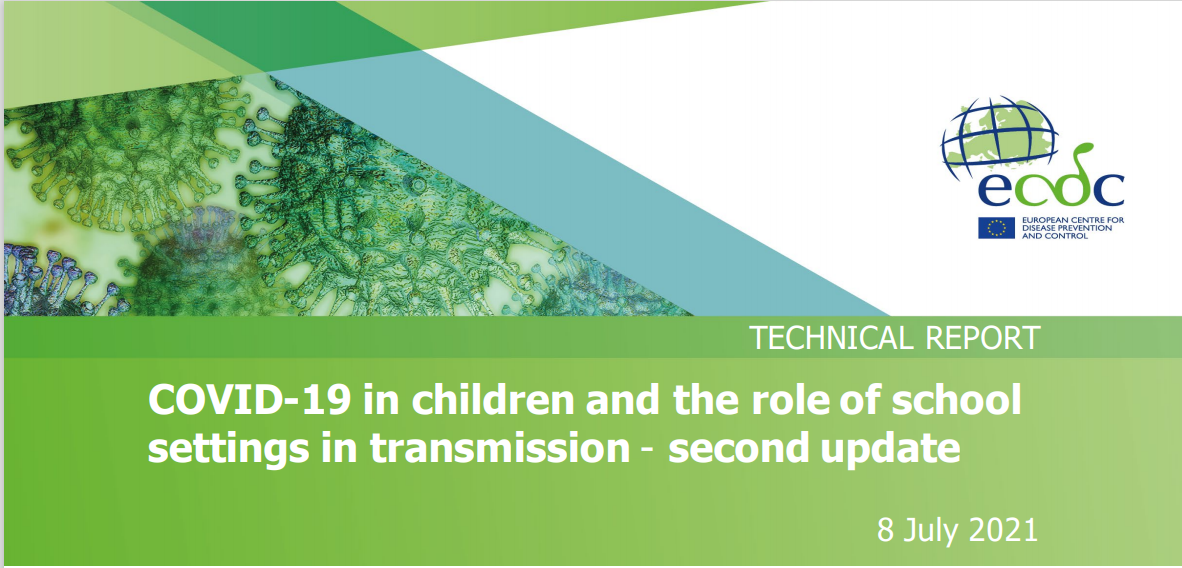Transmission of COVID-19 in education: the scenario for the next school year
19 July 2021
The COVID 19 outbreak is a public health crisis quite different than anything Europe has faced for many years. As education personnel and their trade unions grapple with the outbreak, we are supporting and informing member organisations in any way we can.
- Long COVID-19: What challenges for education trade unions across Europe?
- ETUCE study on Education Trade Unions in Europe facing COVID-19 Omicron Variant
- Well-being of academics and researchers in the Netherlands: who did COVID-19 affect the most?
- Belgium: Education is essential! Truly?
- Education and Training Monitor 2021 sheds light on well-being during COVID-19
- Gender segregation in education: setback to achieving gender equality in EU
- Latvia: the impact of the pandemic on teachers is extremely worrying
- Education trade unions building capacity for renewal beyond COVID-19
- French study: the psychosocial impact of COVID-19 on researchers
- Romania: Success in the negotiations for a vaccination agreement
- UK Study found stress and anxiety of academics above national average during COVID-19 pandemic
- New OECD data outlines the effect of the COVID-19 pandemic on the teaching profession
- Transmission of COVID-19 in education: the scenario for the next school year
- New NEU information tool to encourage critical-thinking on COVID-19 vaccines
- Hungarian teachers’ opinion on the reopening of schools

A report published by the European Centre of Disease Control (ECDC) on 8 July 2021 provides updated data on the transmission of the COVID-19 pandemic and recommendations to ensure a safe and healthy school environments for the school year 2021/2022.
According to the report, school closures alone are not effective if not combined with adequate health and safety measures to contain the spreading of the pandemic. The ECDC also highlights the serious adverse impacts of prolonged school closures on teachers and students. The effects, among others, can be psychological distress, loss of motivation, an elevated risk of dropping out of school, increased screen time and decreased physical activity. Furthermore, increased workload and lack of equipment and connectivity have not only impacted teaching and learning outcomes but also the mental health of teachers and students.
Concerning the educational impact of school closures, the report finds that the quality and effectiveness of remote education is significantly lower than in-person teaching. This further contributes to increasing the learning gap between students and worsening the disproportionate impact of the pandemic on vulnerable communities.
The ECDC warns that the upcoming school year 2021/2022 requires higher caution due to the emergence of the new COVID-19 Delta variant. Experts also predict an increase in infections among adolescents and children, in the school environment, due to the Delta variant. However, studies report that teachers and other education staff are more exposed to infection than students as well as more likely to transmit the virus.
For the upcoming school year, the ECDC urges to put in place adequate health and safety measures as they can significantly reduce the spread of the COVID-19 virus. These include physical and hygiene measures such as reducing class sizes, staggering arriving times, avoid crowding, handwashing, ventilation and wearing face masks. Clean facilities and promoting the policy “stay at home when sick” will further help containing the virus. Moreover, appropriate testing strategies in schools, including rapid antigen tests, combined with effective contact tracing can limit the spread of COVID-19.
Investing in mitigation measures, capacity building and other supportive measures for teachers and schools to ensure continued learning is crucial to ensure a safe return to school at all levels of education, from early childhood education to higher education and research as well as vocational education and training. Teachers should also receive increased support to switch to emergency distance teaching in times when the epidemiological situation temporarily requires so.
ETUCE welcomes these recommendations and underlines the importance of the ECDC findings for adequate measures to prevent COVID-19, as well as the coordination and planning of those measures, together with education trade unions. Education has been seriously impacted by the pandemic. Teachers and education trade unions went to extremes to ensure the provision of classes and quality education. ETUCE will continue to advocate for a safe and healthy return to schools and a resilient recovery of the education system.
Read more:
ECDC Report: COVID-19 in children and the role of school settings in transmission
ETUCE COVID-19 Hub